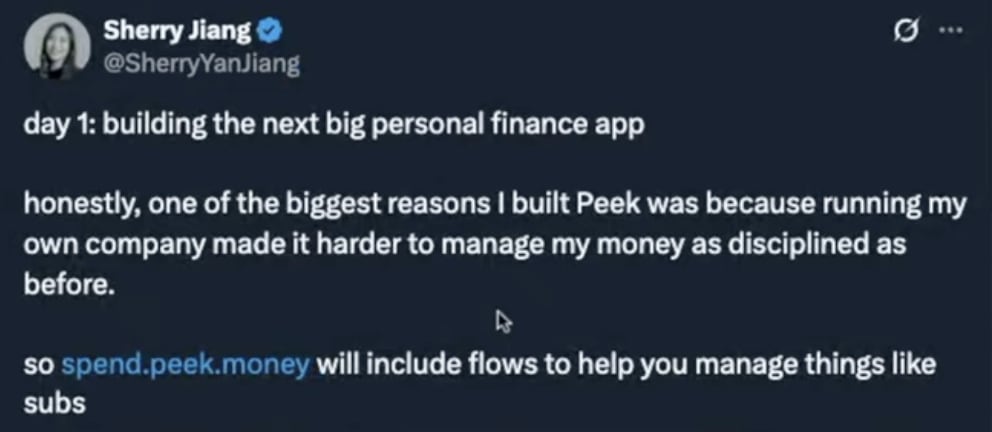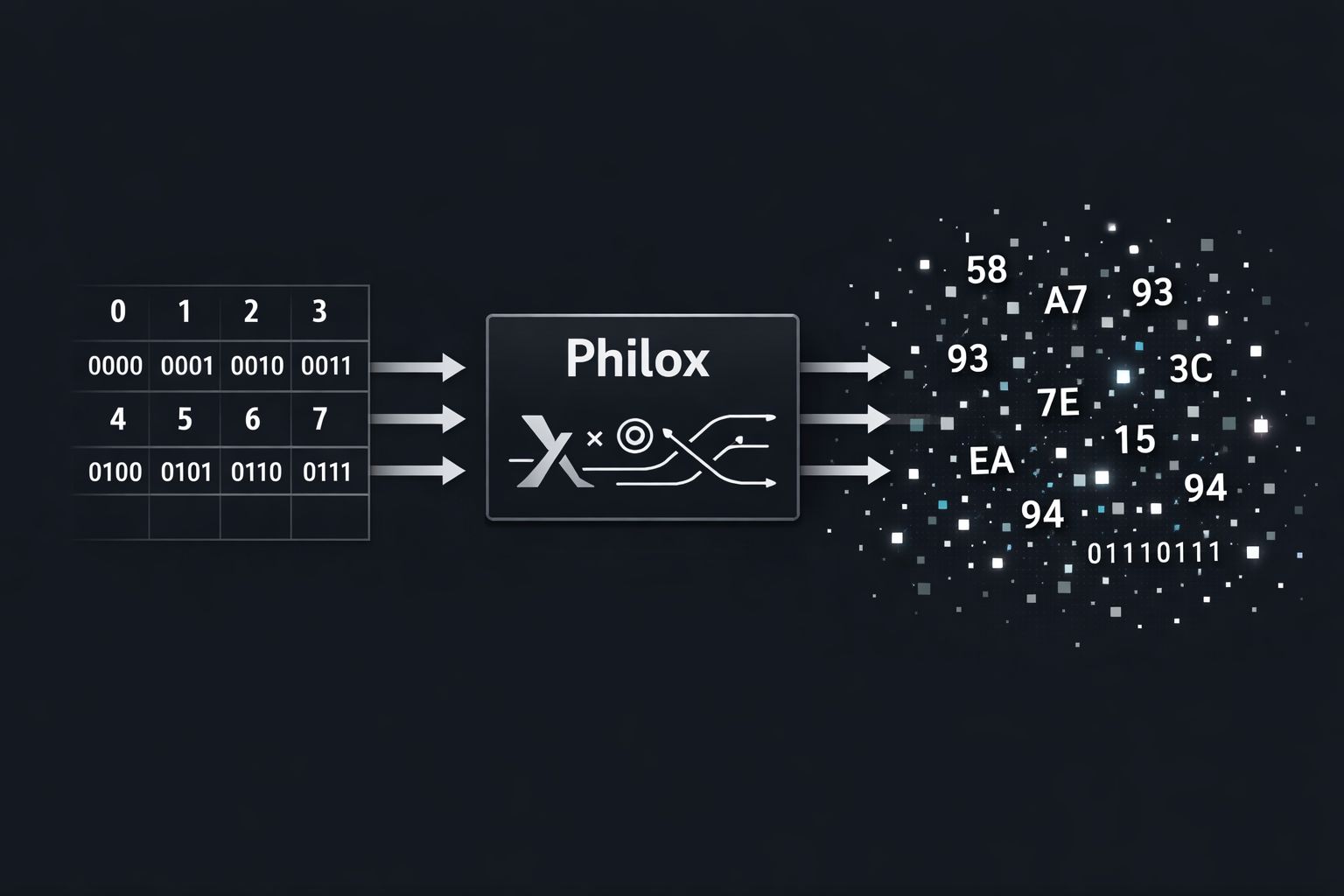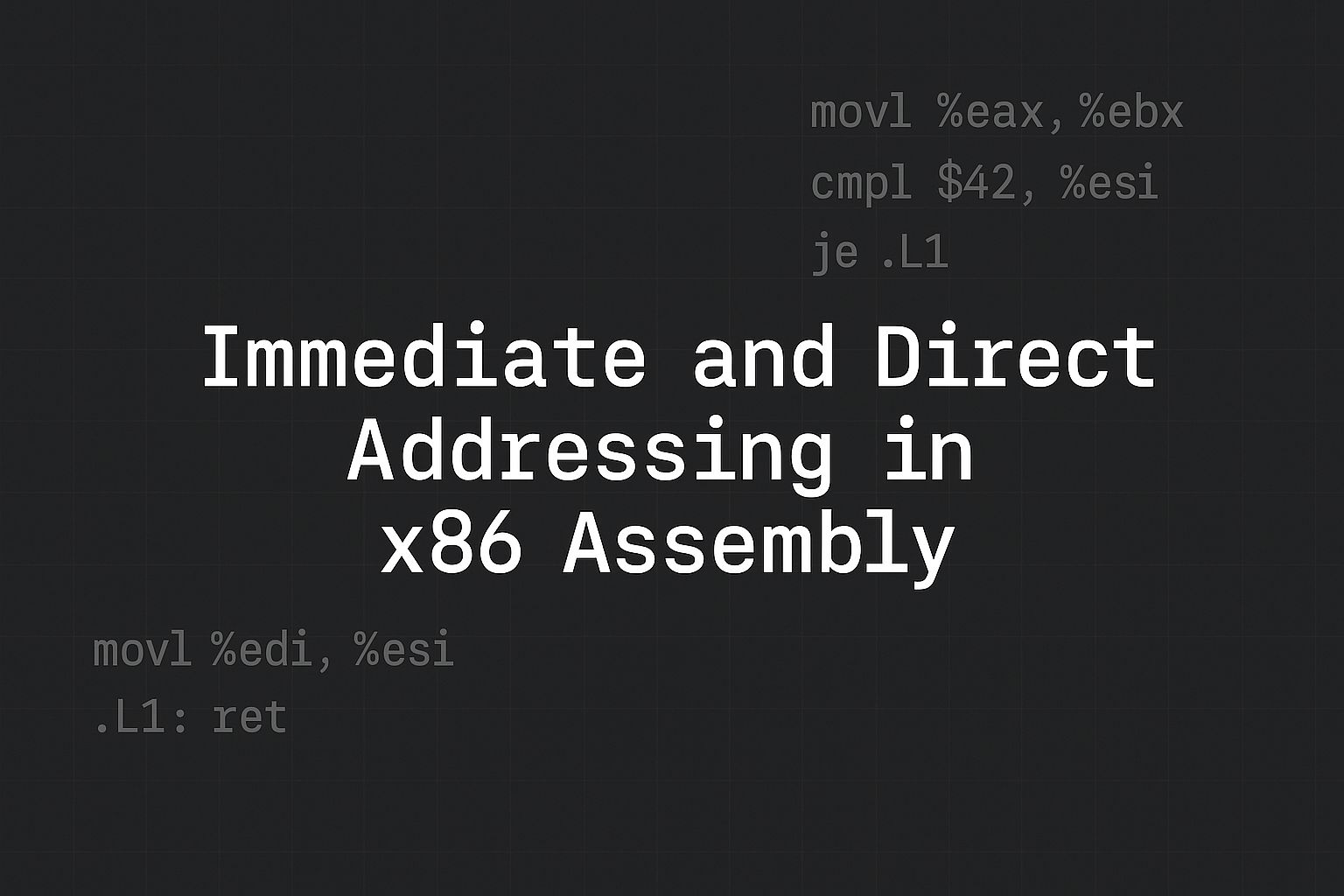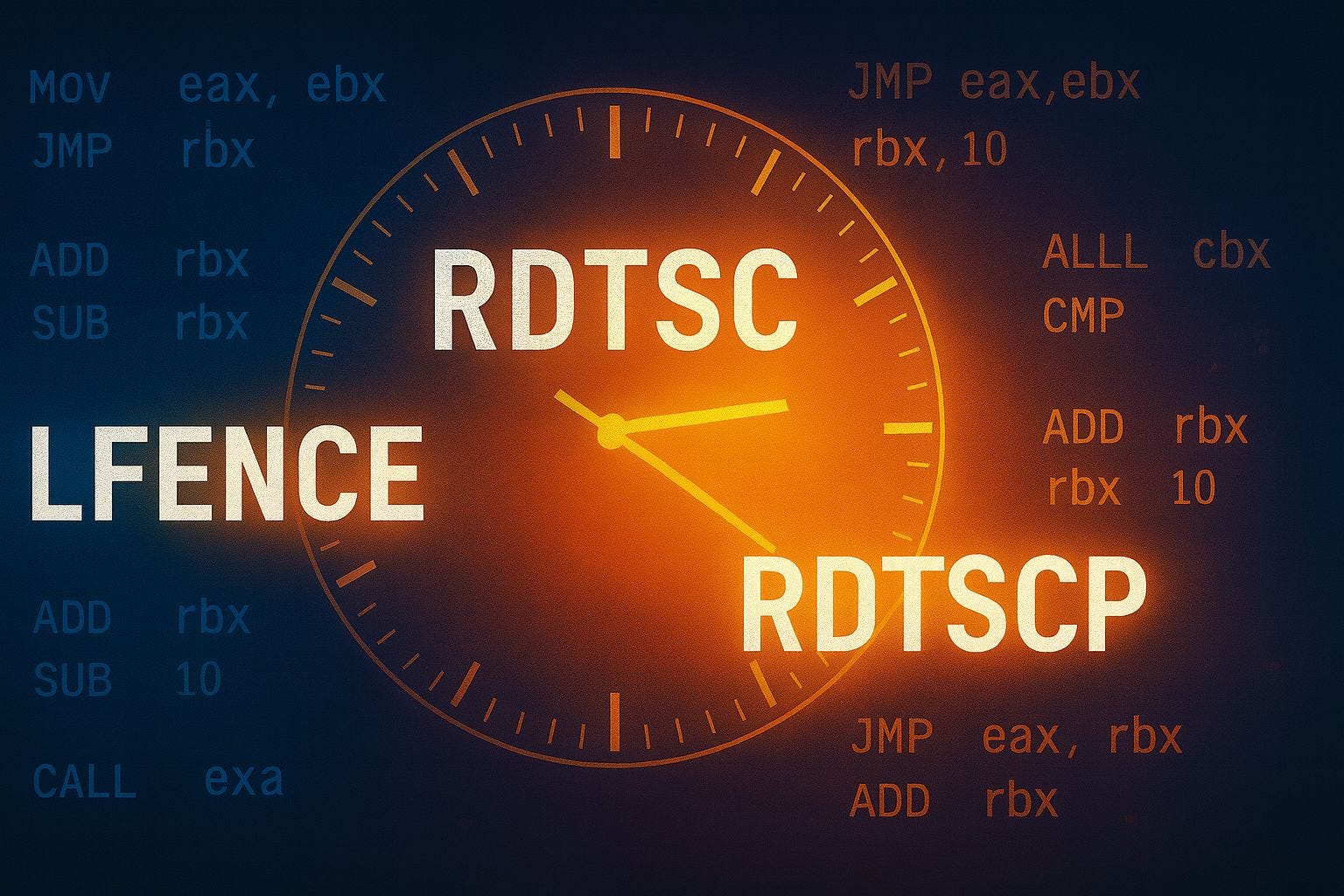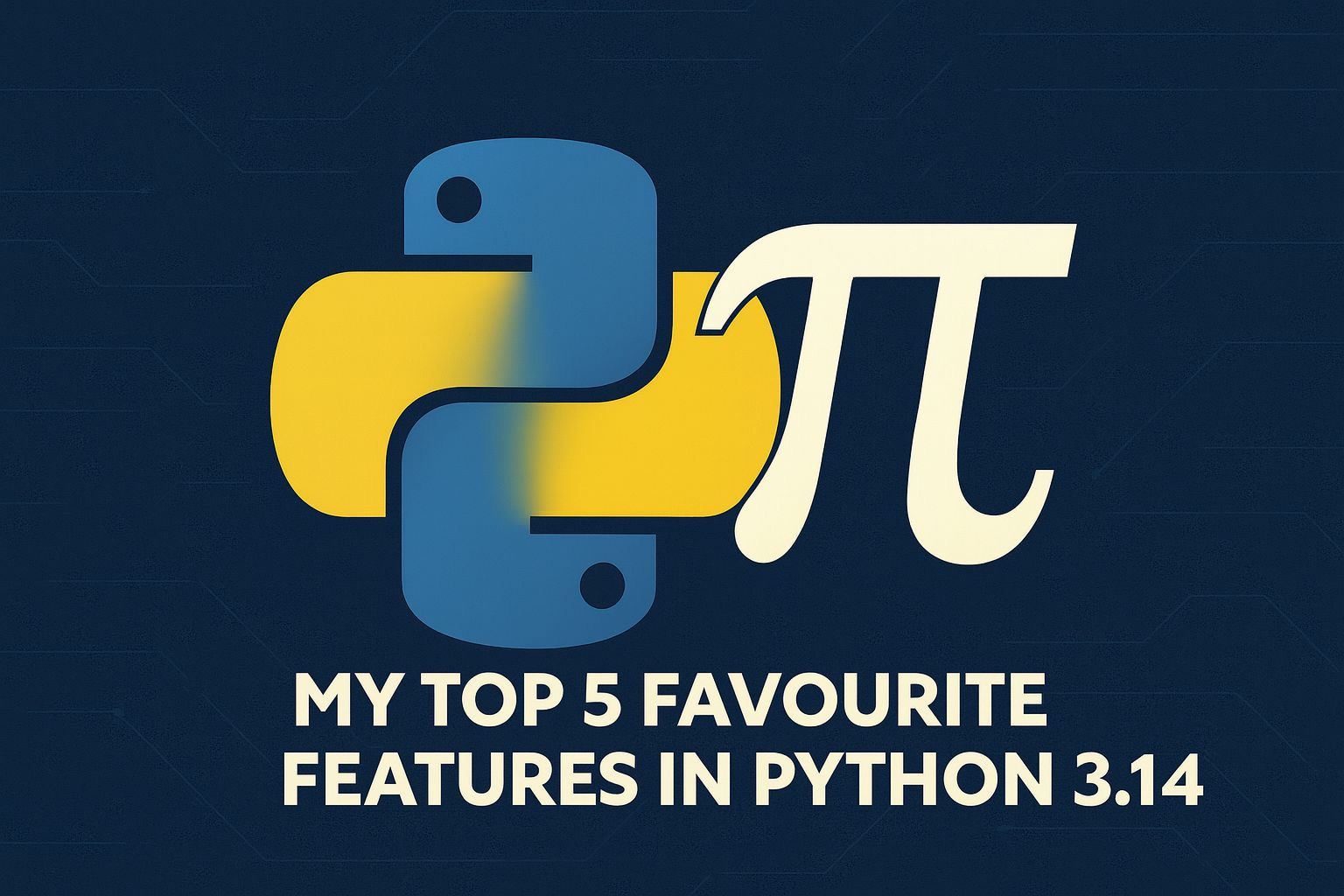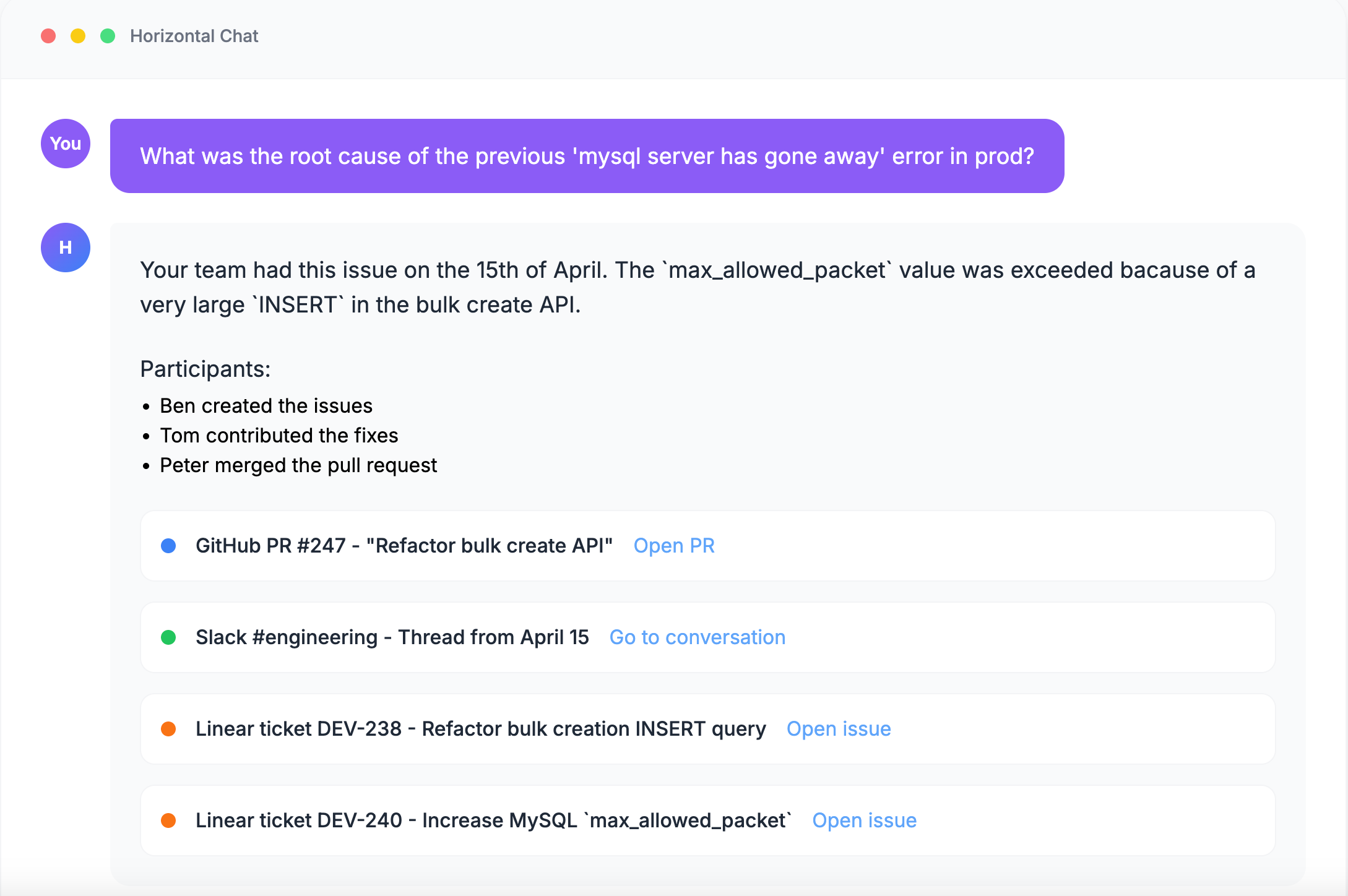
Introduction
This is a new series where I’m documenting the entire process of building my 6th SaaS product.
It’s an app that connects all the knowledge in your team and makes it super accessible:
It’s called Horizontal
In the previous issue, we talked about the Bullseye framework and discussed the “outer ring.”
Bullseye: the middle ring
The outer ring (discussed in the previous post) answered the question of “what’s possible?” We collected every idea for 17 marketing channels that make sense for a SaaS product.
The middle ring answers the question of “what’s probable?”
Once you have lots of ideas on lots of channels, you have three options:
-
Start doing all of them. This would be too much to focus on.
-
Start doing 1 of them. This would be too little.
-
Start doing some of them
The middle ring focuses on running cheap tests on channels that seem the most promising.
So you pick 2-5 ideas and spend a moderate amount of time/money on them.
Each test should answer these questions:
-
How much will it cost to acquire customers through this channel?
-
How many customers are available through this channel?
-
Are these the right customers?
Here’s an example.
SubStack
For Horizontal, I decided to focus on content marketing as my first effort. I will document my entire journey and share everything about development, marketing, etc.
Let’s answer the three questions.
How much will it cost to acquire customers through this channel?
An article like this takes me about an hour to write. Sometimes more, sometimes less.
My hourly rate as a freelancer is $50.
So each article “costs” me $50.
I’m writing these in advance, so I actually don’t know how many of you guys will check out Horizontal.
An educated guess would be something like 5-10%. This is based on my experience.
The newsletter has 16,000 subscribers at the moment.
It means, for each article, about 800 (5%) people will check out Horizontal.
Assuming that the landing page has a 5% conversion rate, it means I’ll get 40 subscribers after each post.
$50 divided by 40 is $1.25
It “costs” $1.25 to get a new ‘customer” through this channel.
But I don’t have a product yet, so these are not real customers. These are “interested people”
If I can convert 5% of those “interested people” to paying customers, that would mean:
It “costs” $25 to get a new customer through this channel.
I would “spend” $50 to get 2 new customers per article.
Is it worth it?
I cannot answer that at the moment.
I would need to know the LTV (the lifetime value) of a customer.
For example, if a product costs $10 and an average customer subscribes for 10 months, the LTV is $10*10 or $100.
I don’t have these stats right now, so I don’t know.
But I like writing these articles, so the answer is yes, it is worth it.
How many customers are available through this channel?
This is very easy to answer. 16,000 potential customers are available through my SubStack.
This is a very small marketing channel since I can only convert a few percent into paying customers.
But it’s the best one to start with.
Are these the right customers?
I hope so.
I’m positioning Horizontal as a developer-first product, and this newsletter is read by developers.
However, my “dream customer” is a CTO or engineering manager in a startup. I hope I’ll find some of them through these articles.
Everything I write about here will eventually be posted on Twitter as well. I’ll repurpose every post and create shorter tweets.
The economics of Twitter are quite similar. I have 17,000 followers there.
The only difference is that it’s easier to go “viral” there. By “viral,” I mean reaching more people than your audience.
I want to “position” my posts to be recognizable on Twitter. Instead of just publishing random stuff, I’ll follow a specific format that is tied to me and Horizontal.
Here’s an example:
She started a “build in public” series, and every post started with
day X: building the next big personal finance app
She did it for months until she reached hundreds of thousands of impressions.
I want to steal that format and use something like this:
day 1: building the knowledge app for engineering teams
or
day 1: building the everything app for engineering teams
By the way,
Answers to the three questions are pretty similar to SubStack.
Other channels
-
Offline events. I’ll go to three events in the next 2 months, and I’ll attend every good opportunity after that.
-
Business development. I have good relations with ~10 founders and businesses. My plan is to introduce Horizontal to them. I don’t want to sell to them. I want to get feedback and opinions. If the product is good, they will become customers.
-
Engineering as marketing. Or simply launching free tools related to your main product. I’ll put more brainpower into that one because it sounds very interesting.
-
Cold DMs on Twitter. Target founders and software business owners.
I think business development is one of the best ways to get started. It’s free, and you can hyper-target your audience.
You don’t have to have all the connections to business.
For example, I talked to a developer, and he really liked the idea of Horizontal. He lives in South Africa, works as a freelancer, so he has seen lots of businesses there. He said that onboarding and offboarding are a constant pain for most engineering teams.
Long story short, he’s going to work on Horizontal as a developer, and he will introduce the product to his network.
If you don’t have too many connections, you can still reach out to developers, and great things can happen.
So these are the channels I’ll start with and test. Obviously, content marketing will be my main focus (regardless of the results). But I’ll always have at least one or two other channels to experiment with.
I’ll spend ~50% of my time on product development and ~50% on marketing.
Bullseye: the inner ring
The purpose of the middle ring is to find channels that will move the needle for your business. Even if it’s just 5% or 10% better.
If everything goes well, you’ll end up with working channels and strategies.
The inner ring is about to identify those and then double down on the best strategy.
I’m not in this stage yet, but I think Twitter is going to be a great channel for Horizontal.
So the Bullseye framework is actually good. It helps to get 20+ ideas and then identify the best ones.
Support
If you want, you can support Horizontal in different ways:
-
Join the project as a marketer
-
Join the project as a developer
-
Bring your team as beta testers
If you’re interested, drop me an email at martin@martinjoo.dev or book an appointment in my calendar here.

Computer Science Simplified
[crypto-donation-box type=”tabular” show-coin=”all”]


